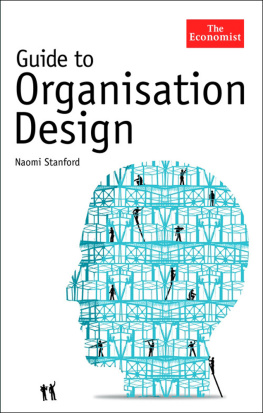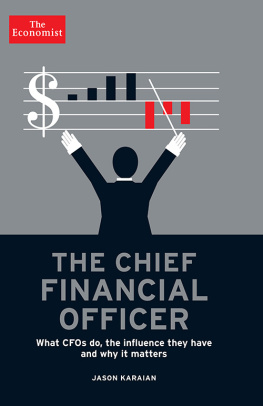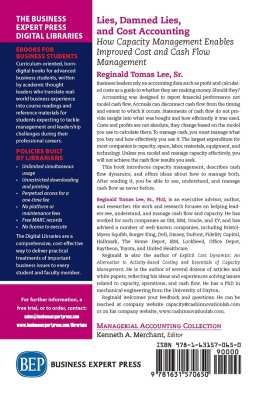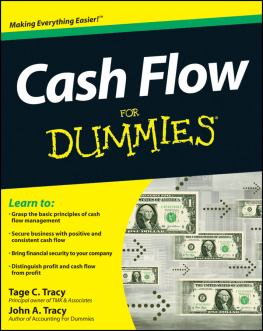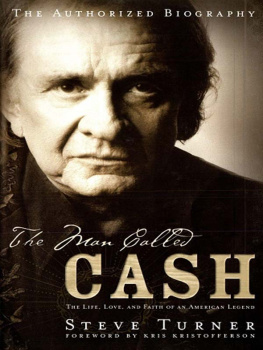GUIDE TO CASH MANAGEMENT
OTHER ECONOMIST BOOKS
Guide to Analysing Companies
Guide to Business Modelling
Guide to Business Planning
Guide to Economic Indicators
Guide to the European Union
Guide to Financial Management
Guide to Financial Markets
Guide to Hedge Funds
Guide to Investment Strategy
Guide to Management Ideas and Gurus
Guide to Managing Growth
Guide to Organisation Design
Guide to Project Management
Guide to Supply Chain Management
Numbers Guide
Style Guide
Book of Isms
Book of Obituaries
Brands and Branding
Business Consulting
Business Strategy
Buying Professional Services
The City
Coaching and Mentoring
Doing Business in China
Economics
Emerging Markets
Marketing
Megachange
Modern Warfare, Intelligence and Deterrence
Organisation Culture
Successful Strategy Execution
The World of Business
Directors: an AZ Guide
Economics: an AZ Guide
Investment: an AZ Guide
Negotiation: an AZ Guide
Pocket World in Figures

GUIDE TO CASH MANAGEMENT
How to avoid a business credit crunch
John Tennent

THE ECONOMIST IN ASSOCIATION WITH
PROFILE BOOKS LTD AND PUBLICAFFAIRS
Copyright The Economist Newspaper Ltd, 2012
Text copyright John Tennent, 2012
First published in 2012 by Profile Books Ltd. in Great Britain.
Published in 2014 in the United States by PublicAffairs,
a Member of the Perseus Books Group
All rights reserved.
Printed in the United States of America.
No part of this book may be reproduced, stored in or introduced into a retrieval system, or transmitted, in any form or by any means (electronic, mechanical, photocopying, recording or otherwise), without the prior written permission of both the copyright owner and the publisher of this book, except in the case of brief quotations embodied in critical articles and reviews. For information, address PublicAffairs, 250 West 57th Street, 15th Floor, New York, NY 10107.
The greatest care has been taken in compiling this book. However, no responsibility can be accepted by the publishers or compilers for the accuracy of the information presented.
Where opinion is expressed it is that of the author and does not necessarily coincide with the editorial views of The Economist Newspaper.
While every effort has been made to contact copyright-holders of material produced or cited in this book, in the case of those it has not been possible to contact successfully, the author and publishers will be glad to make amendments in further editions.
PublicAffairs books are available at special discounts for bulk purchases in the U.S. by corporations, institutions, and other organizations. For more information, please contact the Special Markets Department at the Perseus Books Group, 2300 Chestnut Street, Suite 200, Philadelphia, PA 19103, call (800) 810-4145, ext. 5000, or e-mail special.markets@perseusbooks.com.
Typeset in EcoType by MacGuru Ltd
info@macguru.org.uk
Library of Congress Control Number: 2014932069
ISBN 978-1-61039-516-8 (EB)
First Edition
10 9 8 7 6 5 4 3 2 1
Contents
Preface
THE GLOBAL BANKING CRISIS and subsequent tightening of credit highlighted the importance of cash and cash flow to sustaining a business. Those that had ignored the warning signs and were subjected to stricter credit criteria soon found themselves in trouble.
This guide to cash management is designed to take you through the principles used to manage cash and cash flow and illustrate their practical application. It starts with some financial fundamentals and then covers forecasting, funding, working capital management, investment criteria and the utilisation of surpluses. Each chapter is written from an operational rather than a banking perspective. At the end is a glossary of the financial terms used in the book.
Most books are not just the work of the author but also incorporate contributions from many others. I am grateful to clients and colleagues at Corporate Edge who provided the opportunity to explore aspects of business, complete research and develop my thinking. In particular, I would like to thank Jonathan Crofts and Patrick Schmidt for reviewing the drafts and Profile Books for the help they gave me, particularly Stephen Brough, Penny Williams and Jonathan Harley.
Special thanks to my wife, Angela, and my two sons, William and George, who have supported my enthusiasm for writing, even on holidays. Also to my parents, particularly my father, a chartered accountant, who always encouraged my career, and was the author of a cash management book in 1976. While the fundamentals may not have changed, the technology with which to apply them is very different, as is the political and economic climate.
I would welcome feedback and can be contacted at this e-mail address: John-Tennent@CorporateEdge.co.uk
John Tennent
March 2012
Introduction
Cash management
To run a successful business requires effective management of a variety of resources that include all or some of the following: people, equipment, property, cash, a brand, products, services and inventory. Of all these resources cash is probably the most important. With sufficient cash a business has the ability to buy almost any of the other resources in which it may be deficient. Whether the purchase of that resource is worthwhile at the price required is another matter, but the purchase can still be made. All the resources other than cash have a value to a business that is dependent on their availability, utilisation, market demand and the prevailing economic climate. It is cash and only cash that maintains a constant value and can easily be turned into other assets or resources. This book explores the effective management of this most precious resource.
At a personal level we learn by experience the fundamentals of managing cash. We have a bank account and a monthly statement that tells us our cash balance and itemises all the receipts and payments. Intuitively we know that we must have more cash coming in than going out if we are to avoid debt. A cash crisis occurs when we have to make payments from a depleted bank account and find our borrowing limits have already been reached. In a business, few people have access to the type of cash information that we have at home. Therefore cash flow may appear to be an activity that can be forecast, analysed, monitored and managed by someone in finance. However, there is both a legal and an operational responsibility for managing cash that extends across the whole of a businesss management.
In some countries there is a legal responsibility based in insolvency law. For example in the UK it is an offence for directors to continue to trade if their company cannot pay its debts when they fall due. Directors have a duty to their staff and to their creditors to acknowledge when a business is in financial difficulty. Failure to act when evidence is available can lead to directors becoming personally liable for certain debts.
The operational responsibility requires everyone in a business to understand how their individual actions affect cash and to take responsibility for making changes that can improve its flow. However, many managers have a poor understanding of cash flow and any performance incentives often direct their energy to other aspects of the business such as sales volume or new business generation. Consequently, many businesses can become inefficient in their use of cash by tying up huge amounts in working capital and poorly utilised assets. The challenge is to raise awareness, responsibility and reward for improvements.
Next page

